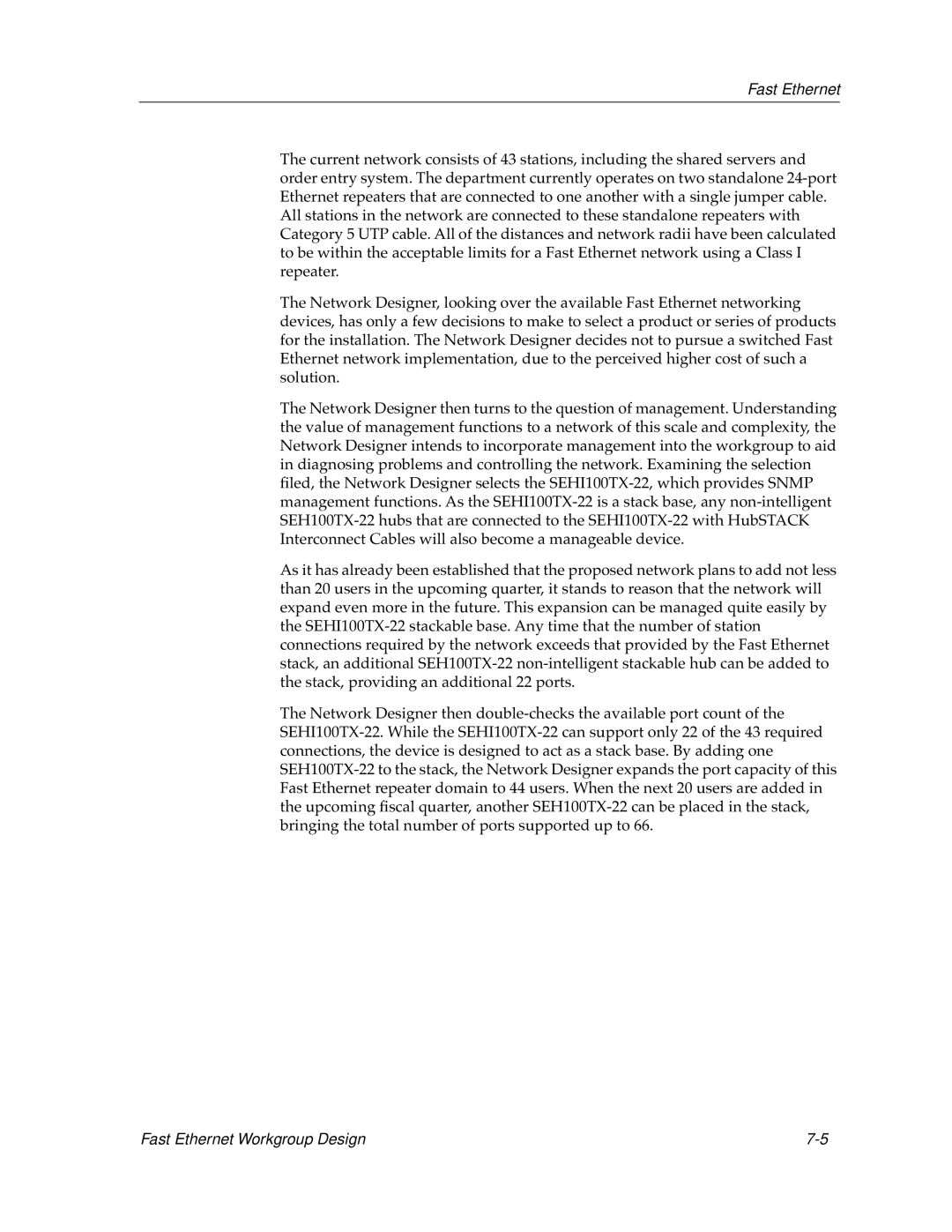Fast Ethernet
The current network consists of 43 stations, including the shared servers and order entry system. The department currently operates on two standalone 24-port Ethernet repeaters that are connected to one another with a single jumper cable. All stations in the network are connected to these standalone repeaters with Category 5 UTP cable. All of the distances and network radii have been calculated to be within the acceptable limits for a Fast Ethernet network using a Class I repeater.
The Network Designer, looking over the available Fast Ethernet networking devices, has only a few decisions to make to select a product or series of products for the installation. The Network Designer decides not to pursue a switched Fast Ethernet network implementation, due to the perceived higher cost of such a solution.
The Network Designer then turns to the question of management. Understanding the value of management functions to a network of this scale and complexity, the Network Designer intends to incorporate management into the workgroup to aid in diagnosing problems and controlling the network. Examining the selection filed, the Network Designer selects the SEHI100TX-22, which provides SNMP management functions. As the SEHI100TX-22 is a stack base, any non-intelligent SEH100TX-22 hubs that are connected to the SEHI100TX-22 with HubSTACK Interconnect Cables will also become a manageable device.
As it has already been established that the proposed network plans to add not less than 20 users in the upcoming quarter, it stands to reason that the network will expand even more in the future. This expansion can be managed quite easily by the SEHI100TX-22 stackable base. Any time that the number of station connections required by the network exceeds that provided by the Fast Ethernet stack, an additional SEH100TX-22 non-intelligent stackable hub can be added to the stack, providing an additional 22 ports.
The Network Designer then double-checks the available port count of the SEHI100TX-22. While the SEHI100TX-22 can support only 22 of the 43 required connections, the device is designed to act as a stack base. By adding one SEH100TX-22 to the stack, the Network Designer expands the port capacity of this Fast Ethernet repeater domain to 44 users. When the next 20 users are added in the upcoming fiscal quarter, another SEH100TX-22 can be placed in the stack, bringing the total number of ports supported up to 66.
